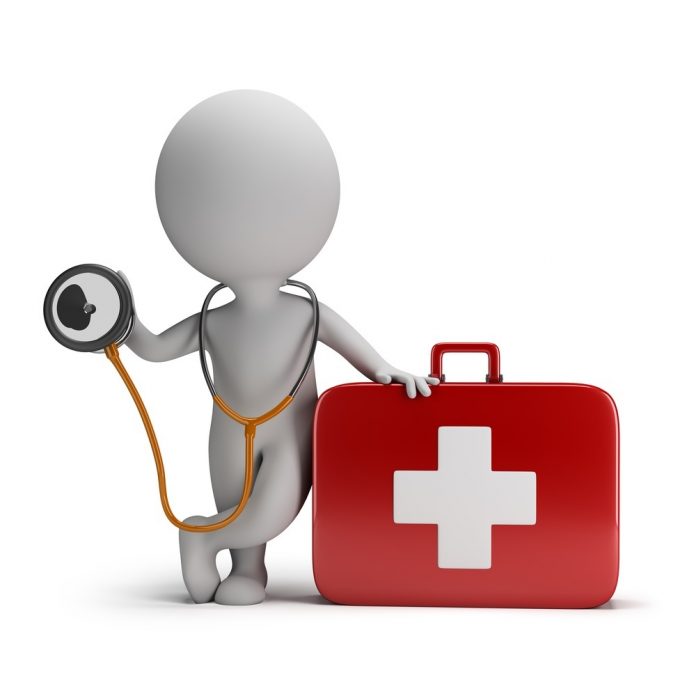This article is written by Upasana Dash, a student from Madhusudan Law College, Odisha. This is a full-scale article that bestows upon features of the Ayushman Bharat scheme launched by the Indian Government.
Table of Contents
Introduction
Director-General of the World Health Organization, Tedros Adhanom said the scheme Ayushman Bharat can be a game-changer for India. It can change the healthcare system of India. It was drafted on 21st March 2018, though it was already announced in the Annual Financial Budget, 2018. It is popularly called “Modicare/Namocare”. Later the Scheme was renamed as PM Jan Arogya Yojna which became functional on the birth anniversary of Pandit Deendayal Upadhyay. The scheme Ayushman Bharat National Healthcare Protection Mission was approved by the cabinet meeting. The World Health Organization and its members have adopted Sustainable Development Goals and Millenium Development Goals in the year 2015.
Aligned with the same vision and mission to create a Swasth Bharat health scenario in the country has undergone massive changes in ensuring the quality of life of the citizens. Better access to quality medical treatment, prioritization of health of pregnant and lactating women, and launch of medical insurance schemes especially for economically weaker sections have come a long way in transforming the health sector of the country.
India has brought several health schemes to secure health for all; such as Rashtriya Swachhata Mission to end open defecation, New Health Policy, E-Health with the addition of health equipment production. Ayushman Bharat Scheme is the world’s largest universal health coverage scheme announced by the Indian Government.
About the scheme
Pradhan Mantri Jan Arogya Yojana (PMJAY) emerged into Ayushman Bharat, is a health scheme pioneered by the Union Government on 23rd September 2018 in 445 districts. The Union Cabinet chaired by Shri Narendra Modi on 21st March has approved the launch of a new Centrally sponsored Ayushman Bharat National Health Protection Mission (AB-NHPM) having a central sector component under Ayushman Bharat Mission anchored in the MoHFW. The target beneficiaries of the proposed scheme will be more than 10 crores families belonging to the poor and vulnerable population based on the Socio-Economic Caste Community database. AB-NHPM will subsume the ongoing centrally sponsored schemes- Rashtriya Swasthya Bima Yojana (RSBY), and the Senior Citizen Health Insurance Scheme (SCHIS). It is a radical beginning because not only public but private hospitals have been selected to provide services. More than 13,000 hospitals have already been selected under the scheme.
RSBY was launched in the year 2008, by the Ministry of Labour and Employment and gives a cashless insurance scheme with benefit coverage of Rs 30,000/- per annum on a family floater basis [5 members], for Below Poverty Line families, and 11 other defined categories of unorganized workers. RSBY was merged into the Ministry of Health and Family Welfare (MoHFW) w.e.f 01.04.2015.
During 2016-2017, 363 families were covered under RSBY in 278 districts of the nation and they could access medical treatment across the network of 8,697 empaneled hospitals (both public and private empanelled hospitals) with the assistance of “Arogya Mitra”.
Steps to avail of the scheme
How it works
- Beneficiaries registration and eligibility confirmation through Aadhar,
- Selection of package and submission of support evidence for treatment,
- Beneficiaries will then be given with required treatment,
- After discharge, discharge summary, an electronic payment will be kept in record.
To ensure smooth access, people have been given gold cards when patients can show an empanelled hospital, verification will be completed with biometrics if the gold cards are given.
Medical terminologies
- Primary care – treatment on an out-patient;
- Secondary care – hospitalization for non-critical ailments. This is available for District Health Care, and Community Health Care;
- Tertiary care – treatment of critical ailments that require high-technology and expensive features.
Benefits
The Scheme will cover almost all secondary care and most of the tertiary care procedures. It has no role to play with the members of the family or size of the family and age of the family members that are no bar in size and age of the family. The benefit of the scheme is included with pre and post-hospitalization expenses. All pre-existing conditions will be considered from day one of the policy whereas no scheme considers the pre-existing conditions. The beneficiary will also provide transfer allowances per hospitalization. Benefits of the scheme are portable across the country provided with the empaneled hospital and the scheme will be allowed to take cashless benefits.
Selection of beneficiaries
AB-NHPM is a prerogative based scheme with entitlement based on criteria in the SECC database. It includes mostly the rural areas; families with only one room and Kucha wall and families with no adult male member between the age of 16 to 59, disabled member and no able-bodied adult member in the family, SC/STs, and landless households deriving major part of their income from manual casual labor, primitive tribal groups, legally released bonded labor and for urban areas, defined occupational classes are entitled under the scheme.
To central cost, the payment for treatment will be done on package rate which is subject to the government’s decided cost in advance. All the costs of the treatment shall be added to the package rates and it will be a cashless or paperless transaction. Karnataka, West Bengal, Odisha, Kerala have denied accepting the AB-NHPM. State/UTs will have the flexibility to accommodate these rates within a limited bandwidth.
Expenditures for the scheme
The expenditure incurred in premium payment will be decided in proportion between Union and State government is a specified ratio of 60:40 as per the guidelines issued by the Ministry of finance. This scheme will be reached out across all State/UTs.
Major impacts
During the last 10 years (NSSO-2015), hospitalization expenses have increased nearly 30% due to several reasons such as costly equipment, inflation, expensive technology, etc. more than 80% of expenses are out of the pocket (OOP). in rural areas, they often depend upon their savings (68%), and on borrowings (25%), in urban areas, they relied upon savings (75%), and (18%) on borrowings (NSSO, 2015).
Out of pocket expenditure is 60% which guides about 6 million families getting into poverty due to tragic health expenses. AB-NHPM will bring major impacts on the reduction of out of pocket expenditure on the ground if:
- The increased benefit cover nearly 40% of the population,
- Covering all secondary and tertiary hospitalizations,
- Coverage of 5 lakh for each family.
Niti Ayog has calculated the premium for each family will be rupees 1,100. However, the major criticism of the scheme is, it aims to cover 10 crore families and each family’s premium is rupees 1,100, so 11,000 crores should be needed as per the calculation, but the net worth of the budget is 2000 crore. So the government has provided a budgetary support of rupees 85,217 crores as Central Share over this period. Experts assume that the total expenditure per annum will be 20,000 crores.
Salient features
- The National Health Mission will be the basis for Universal Health Coverage.
- The goals are oriented toward National Health Policy, and Sustainable Growth Development-3 (SDG-3).
- NHM has helped the country to gain the Millennium Development Goals (MDGs).
- NHM will strengthen the public health system, by prioritizing aspirational districts.
Aspirational district – In India there are 115 aspirational districts and 35 of them affected by the Left Wing Extremists (LWE) violence, for example, Chhatisgarh, 55 districts just affected by LWE, and the rest 15 districts in Jammu and Kashmir and North-east affected by terrorism.
Non- communicable diseases, geriatric health care, palliative care, and rehabilitative care services are included with comprehensive primary health care by focusing on Sub Health Centres or Primary Health Centres and Wellness Centres (HWCs).
Patient holding capacity of SHC is 3000 to 5000, PHC is 20,000 to 30,000, and CHC is 80,000 to 120,000. The HWCs will give preventive, promotive, curative, and rehabilitative services with the addition of NCD screening and management. There will be free universal screening for non-communicable diseases. Package of twelve services including free universal screening for common non-communicable diseases.
Besides, National Health Mission has ensured to emphasize wellness with the help of Ayurveda, Yoga, Unani, Siddha, Homeopathy (AYUSH) to provide free drug (Ministry of Chemical, and Fertilizer has promoted Jan Ayusadhi) so that people could get medicines at low cost and Ministry of Health has promoted Amrit Store to avail affordable price for the medicine. It will incorporate the reduction of Out Pocket expenses.
The scheme has enhanced the quality certification of public health facilities Kayakalp, laQshya. Kayakalp schemes encourage public health facilities and activities such as bio-waste disposal. The winner will receive a cash award. And to reduce the infant mortality rate from 66 in 2001 to 34 in 2016, the laQshya scheme has been introduced. It has excluded approximately 46% material deaths, 40% stillbirths, and 40% neonatal deaths that occurred on the day of delivery. The main focus of the scheme is to reduce neonatal mortality rate (NMR), Under-Five mortality rate (U5M), Maternal Mortality Rate (MMR), and total Fertility Rate (TFR).
How far Ayushman Bharat succeeded
1. The exact figures regarding the AB-NHM are as follows:
- Annual Insurance covers per family – rupees 5 lakh,
- Families covered – 10,74 Cr,
- Diseases package – 1, 394,
- E-card distributed to beneficiaries – 100 min,
- Spent on treatment – 7, 500 Cr,
- Empanelled hospitals – 18, 073,
- Private sector hospitals – 53%,
- People availed cashless treatment – 4.6 min.
More than 20,000 Health Wellness Centres have been inaugurated and made operational. More than 5 crore people have been screened for non-communicable diseases. More than 45 lakh hospital admissions have taken place along with cashless treatment. Ayushman Bharat has given a framework to progress Universal Health Care in the right direction. Coming to the progress of States and UTs towards AB-NHM, 11 States/UTs enlarged the coverage to add almost all families. 23 States/UTs enlarged the beneficiary base. Some States here merged their ongoing schemes into PJAY so that they will deal with different targets through one scheme for example Karnatak has merged 7 different schemes and Kerala has merged 3 different schemes into one.
2. Private Sector Participation – 62% of treatments have been done by private hospitals. It has promoted its demand by making accessible facilities to 55 crore people. To access all the benefits of AB-NHM, hospitals have improved their equipment, facilities, service amenities, and their funds are also aligned with PMJAY.
3. In terms of employment – with the inauguration of 1.5 lakh HWCs by 2022, 1.5 lakh jobs will be created for community health officers with the addition of 50,000 multi-purpose health workers. It has assured 50,000 – 60,000 jobs and is expected to add 12.5 lakh jobs in public, and private hospitals in the next 3 to 5 years. 90% of jobs will be created in the Health Care sectors, rest of the jobs will be created at insurance, implemented in support.1.5 lakh beds will be added to the hospitals 7.5 lakh opportunities will be given to the doctors, nurses, technicians, pharmacists, through Pradhan Mantri Arogya Mitra.
4. IT – infrastructure – The whole scheme is supported by a strong IT-infrastructure backbone that helps to get records of treatments, identification of beneficiaries, processes claims, get feedbacks, and grievances. A live dashboard is provided to beneficiaries which monitors the performance of doctors. It also prevents fraud in the scheme.
Conclusion
Ayushman Bharat is improvising the potential of collective bargaining and leveraging economics. Under PMJAY Scheme, the Indian government provides financial support to over 10.34 crore vulnerable India families and nearly 40% of Indian citizens can get access to free healthcare services through this Scheme. It stipulates standard treatment protocols, strengthening the interrelation between HWCs and PMJAY as well. So that implementation of healthcare facilities will be successful especially in “Greenfield” States. Getting quality medical service should no longer be a privilege, it should be available to every citizen of India. The PMJAY Scheme has encountered success ever since its launch. Furthermore, the performance of the scheme has changed the lives of many families.
References
LawSikho has created a telegram group for exchanging legal knowledge, referrals and various opportunities. You can click on this link and join:
 Serato DJ Crack 2025Serato DJ PRO Crack
Serato DJ Crack 2025Serato DJ PRO Crack










 Allow notifications
Allow notifications



